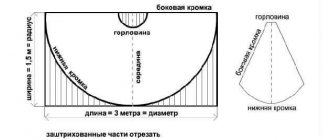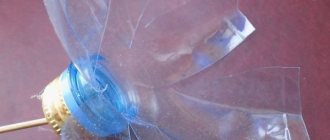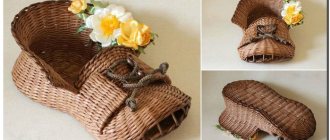Experts in the knife craft manage to make blades out of anything. There was a piece of iron lying around in the barn - a couple of days of work, the blade was ready. Not being surprised by such people is simply nonsense. Invariably, individual products turn out to be works of art. And the knife made from springs looks unique in its own way. Let us sanctify the theme of the painstaking work of the master.
Homemade knife made from springs.
What is special about a knife made from a spring?
The reason for the popularity of such a product as a spring knife lies in the properties of the metal. High wear resistance and strength combined with high ductility have allowed many generations of craftsmen to use springs as the main source of raw materials.
Characteristics of spring steel
The springs are made from spring steel 65G, but other grades can be used: 50HGSA, 50HGA, 50HFA. These are also spring steels - it is possible to determine which of them was taken as the material for the blade only through chemical analysis. Or according to the nuances of the behavior of the metal during processing, but only experienced craftsmen can handle this. For a novice manufacturer, the difference between the listed materials will be almost invisible.
65g steel for knives: pros, cons and features
Knife steel is a combination of carbon and iron. Depending on the purpose and required qualities, the proportions may vary significantly. In addition, to achieve high strength, durability and hardness, various additives and components can be used to improve the properties of the source material.
The main task of most gunsmiths is to develop or reproduce a steel for a knife that will have high strength and at the same time high hardness.
Today, 65g alloy is considered one of the most popular steels for knives. It is about this that will be discussed further.
Application of spring steel
65G is considered one of the cheapest spring steels. At the same time, it has a number of unique properties that make it indispensable for creating springs. Spring steel for a knife contains chromium, nickel, manganese, and silicon. These elements provide the properties for which manufacturers choose this particular material:
- good flexibility;
- high impact strength;
- hardness;
- wear resistance;
Heat treatment plays a big role in improving the qualities of the material. The steel becomes stronger and its hardness increases. Unfortunately, it is not resistant to corrosion and tends to rust. But the advantages outweigh the disadvantages and it is often used as a material for a blade.
Such knives are used in a variety of fields. First of all, as kitchen utensils - strong, durable, durable - what else is needed for daily work in the kitchen and, for example, for cutting meat? The same considerations forced hunters, fishermen and tourists to try to get this high-quality “homemade product” into their arsenal. Therefore, many craftsmen made tourist and hunting knives for sale.
Due to the good characteristics of the steel, these knives were popular among the military. Conscripts who had access to tools for metalworking made army knives in makeshift conditions. Over time, manufacturers began to aim at more serious products: axes, swords, machetes, katanas. Due to their good toughness, spring steels are excellent for forging. Forging can be used to make a blade of any shape, even the most bizarre.
Features of the composition
Certain properties of 65G steel have made it completely unsuitable for a procedure such as welding. However, even despite this, the scope of application remains quite wide, if you do not take into account the use as a bladed weapon. From such an alloy it is possible to successfully manufacture such parts as springs, leaf springs, metal structures, various components, etc. Steel is used in the assembly of trucks as a spring for the rear axle. In order to avoid such a defect as rust for as long as possible, it is necessary to store products only in a dry place, and also periodically coat them with an oil composition.
It is worth noting that there is a document that regulates the main qualities of this product. Steel 65G is produced in accordance with GOST 14959-2016. This document only applies to steel that is either hot-rolled or forged.
It is worth highlighting that the absence of a large number of elements for alloying the composition makes it quite cheap. In addition, hardening of 65G steel improves parameters such as wear resistance, high impact strength and some others. Hardening occurs at a temperature of 800-830 degrees Celsius, followed by tempering at a temperature of 160-200 degrees Celsius.
How to make a knife from a spring
Making a knife from a spring can take a lot of time and effort, especially if a person is doing it for the first time. But spring steel lends itself well to processing and will “tolerate” the mistakes of a beginner, so it is best to create your first knife from it.
Typically, the material is found outdoors: on the street, in car depots, next to garages, in car dumps and other similar places. Therefore, the spring may be covered with dirt and rust and must be thoroughly cleaned before work. If it is necessary to straighten a bent spring, then it is heated until red-hot, and then allowed to cool under normal conditions - at room temperature.
How to make a knife from a spring using forging
All spring steels, including 65G, have one quality in common: they are perfectly forgable. Knives made of spring steel, made by forging, will be more reliable and durable, because during the processing process the metal is strengthened due to plastic deformation and changes in the macrostructure.
Before forging the spring, it is necessary to cut out the profile of the future blade from it. Then the workpiece is securely fastened and heated until red hot. Forging creates a point and blade. This method makes it easy to give the blade the required shape, as well as set its width. Spring forging is good for making axes and various exotic things, such as a machete or sword.
The blade is allowed to cool to ambient temperature after the job is completed.
Material
Before forging a knife with your own hands, you need to select the material from which the product will be made. When choosing a metal, you need to take into account the following indicators:
- hardness;
- strength;
- melting point;
- wear resistance;
- plasticity.
To achieve the required technical characteristics from a certain type of metal, manufacturers add alloying additives to the composition. The percentage of additional components is selected individually.
It is impossible to create perfect steel, since an increase in one of the 5 indicators leads to a decrease in another. The following steel grades are most often used for the manufacture of blades:
- ШХ15;
- R6M5;
- U16;
- U8;
- 65G;
- U7;
- X12MF.
Steel knife for hunting (Photo: Instagram / zabotinpoman)
How to sharpen a knife from a spring with your own hands
It is necessary, first of all, to decide on the appearance of the future product. The shape depends on the purpose of the knife: kitchen, hunting, souvenir or some other. As a result, the blade can be anything - this is influenced only by the imagination and capabilities of the manufacturer. If the choice is made, then you need to take a ready-made template or make it yourself from cardboard or thick paper.
Next, to make a knife from a spring with your own hands, you need to be ready to start working with metal. First, the template must be attached to a metal workpiece and traced with a marker, pencil, scriber (GOST 24473-80) or other marking tool. According to the contour obtained using the template, it is necessary to cut out the profile of the product. The following tools are suitable:
- band-saw;
- an angle grinder, also known as a grinder - it is important not to overheat the workpiece when cutting;
- drilling machine or drill - in this case, holes are drilled along the contour, then the partitions between them are broken or cut out;
- you can use hand tools;
The processing process itself is quite simple, although it requires a certain concentration to cut the workpiece in accordance with the markings. When the processing is successfully completed and the workpiece begins to correspond to the template, you can begin to form the blade. The main task is to make bevels. The blade is again marked, determining the size of the bevels. During further processing, you should strictly adhere to the markings.
Electric sharpener
For work, it is best to use an electric sharpener. A belt sander and an angle grinder are also suitable, but in the case of the latter, good command of the tool is required. You can sharpen the bevels by hand - with a file. At this point, the metal work should be completed, because then the blade will undergo heat treatment, after which it will be very difficult to do anything else with the workpiece.
Knife sharpening
The work on the spring knife is almost complete, all that remains is to sharpen it. For this use:
- bars;
- musats;
- grinding machines;
- mechanical sharpeners;
- electric sharpeners;
Really good results are obtained using a whetstone or an electric sharpener. It will take a lot of time to sharpen a knife well using a whetstone or whetstone. If it is enough to spend about half an hour on a regular kitchen knife, then leveling and sharpening a long forged knife can take several days.
For better control of the sharpening process, the sharpening stone is placed on a stable horizontal surface. Its optimal size is approximately one and a half times longer than the blade. You need to start sharpening with a coarse sharpening stone with a large grain. You must continue until a hangnail appears. After this, a fine-grained stone is taken, and then the process continues with its help. To make a homemade spring knife sharp and keep sharpening for a long time, you must follow the following rules:
movement is carried out by translational movements of the knife along the block - with the cutting part forward; The end of the block and the end of the blade should “meet”. It is necessary to synchronize the displacement of the knife across the block (from the handle to the blade) and the movement of the knife along the block; the plane of the blade and the surface of the block should form an angle of 20 to 25 degrees - this is a universal sharpening angle
Depending on the purpose of the knife, the angle may change, but it is important that it is kept constant the entire time the knife is sharpened;
At the end, it is necessary to grind the blade to keep the knife sharp for a long time. To do this, take a sharpening stone with the finest grain. Then, carefully, so as not to spoil what has already been done, the burr is removed.
Sharpening is a process that requires patience and care. Skill comes only with experience, so anyone who doesn’t want to wait can use an electric sharpener. This will save time and also keep your knives in excellent condition.
Making a knife is a complex process that requires attention, concentration, thoroughness, and skills in working with metal. But the work will not be in vain, because the end result will be a beautiful product created with your own hands. The more love and diligence the master approaches the work, the better the product will be. Even a beginner, if he is patient and persistent, will be able to master the skills and also become proud of the results of his work.
If you find an error, please select a piece of text and press Ctrl+Enter.
Blade hardening
The main type of heat treatment is hardening. It is needed so that the blade is durable and can remain sharp for a long time after sharpening. There are different methods:
— hardening, with heating only the cutting edge;
— hardening of the cutting edge by heating the entire product;
— hardening and tempering;
— full hardening;
In the first case, only the outermost part of the blade is heated to a non-magnetic state, after which it is placed in oil and kept until the oil stops bubbling. The second method is more complicated: the entire knife is heated, but it only needs to be immersed in oil by a third - so that the cutting edge is covered with liquid.
Quenching and tempering is a method in which the workpiece is cooled in two stages: first at an elevated temperature, but below the quenching temperature, then at room temperature.
The simplest method of hardening is to completely harden the blade, but with this method there is a chance that the blade will lead. Then it is necessary to straighten the damaged workpiece. This can be done either by preheating the blade or in a cold state.
Quenching and tempering of knife blanks
To harden a knife from a file, you should prepare a burner that allows you to obtain the highest temperature values, a container with waste oil, a magnet and glass to check the quality of hardening. Heating the metal with a burning torch should cover the entire area of the blade and the surface of the handle adjacent to it for 30 mm. The area of the stylet on which the handle pads will be located is not hardened. Warming up should be uniform, without overheating.
Checking the correctness of hardening is carried out with a magnet - when the desired temperature is reached, the metal stops reacting to its approach. When no reaction is achieved in a uniformly painted iron part, heating is continued for another 3-4 minutes, after which it is lowered into oil for cooling. You can get a better effect by additionally placing the vessel with oil in cold water. A blade tempered in this way should leave scratches on the glass.
The hardening procedure results in the appearance of high internal pressure in the metal. This can contribute to the formation of cracks in the blade when sharpening it. Tempering the steel allows you to remove the increased internal stress (at the same time, the hardness of the material will also decrease slightly). To release the metal, the workpiece is placed in the oven for 1.5 hours, setting the heating temperature to 200 ° C. Cooling of the blade should be gradual; it should not be removed from the oven until it has completely cooled.
Making the handle
A handle can be made from almost any raw material, but wood, plastic, leather, and bone are especially popular. Inlaid handles with alternating layers of, for example, leather and birch bark look beautiful.
Bone is a traditional material for making a variety of trinkets and household items. Having the skill of bone carving, you can make a unique, beautiful handle. But the easiest way is to take two wooden or plastic pads, place them on both sides of the shank and secure them together with rivets, and for greater strength, also with epoxy glue. Sometimes screws and nuts are used for fastening, but if appearance is important, then it is better not to use them.
The handle should be comfortable, so great attention must be paid to its processing. To do this, use files first and then sandpaper. If the overlays are wooden, then they must be impregnated with oil to ensure the durability of the wood. Impregnation emphasizes the structure of the wood and gives the product an attractive appearance. After fixing the handle, its final grinding is carried out.










